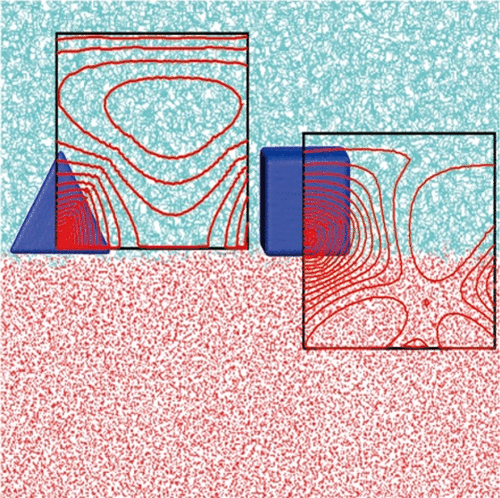当前位置:
X-MOL 学术
›
J. Phys. Chem. Lett.
›
论文详情
Our official English website, www.x-mol.net, welcomes your feedback! (Note: you will need to create a separate account there.)
Quantitative Prediction of Position and Orientation for Platonic Nanoparticles at Liquid/Liquid Interfaces
The Journal of Physical Chemistry Letters ( IF 5.7 ) Pub Date : 2018-01-09 00:00:00 , DOI: 10.1021/acs.jpclett.7b03187 Wenxiong Shi 1 , Zhonghan Zhang 1 , Shuzhou Li 1
The Journal of Physical Chemistry Letters ( IF 5.7 ) Pub Date : 2018-01-09 00:00:00 , DOI: 10.1021/acs.jpclett.7b03187 Wenxiong Shi 1 , Zhonghan Zhang 1 , Shuzhou Li 1
Affiliation

|
Because of their intrinsic geometric structure of vertices, edges, and facets, Platonic nanoparticles are promising materials in plasmonics and biosensing. Their position and orientation often play a crucial role in determining the resultant assembly structures at a liquid/liquid interface. Here, we numerically explored all possible orientations of three Platonic nanoparticles (tetrahedron, cube, and octahedron) and found that a specific orientation (vertex-up, edge-up, or facet-up) is more preferred than random orientations. We also demonstrated their positions and orientations can be quantitatively predicted when the surface tensions dominate their total interaction energies. The line tensions may affect their positions and orientations only when total interaction energies are close to each other for more than one orientation. The molecular dynamics simulation results were in excellent agreement with our theoretical predictions. Our theory will advance our ability toward predicting the final structures of Platonic nanoparticle assemblies at a liquid/liquid interface.
中文翻译:

等离子体在液体/液体界面上的位置和方向的定量预测
由于其固有的顶点,边缘和小平面的几何结构,柏拉图纳米粒子是等离子体技术和生物传感领域中很有希望的材料。它们的位置和方向通常在确定液/液界面处的组装结构中起着至关重要的作用。在这里,我们在数值上探索了三种柏拉图纳米粒子(四面体,立方体和八面体)的所有可能方向,并发现比随机方向更优选特定方向(垂直向上,边向上或小平面向上)。我们还证明了当表面张力支配它们的总相互作用能时,可以定量预测它们的位置和方向。仅当总交互作用能量彼此接近一个以上方向时,线张力才可能影响其位置和方向。分子动力学模拟结果与我们的理论预测非常吻合。我们的理论将提高我们预测液体/液体界面的柏拉图纳米颗粒组件最终结构的能力。
更新日期:2018-01-09
中文翻译:

等离子体在液体/液体界面上的位置和方向的定量预测
由于其固有的顶点,边缘和小平面的几何结构,柏拉图纳米粒子是等离子体技术和生物传感领域中很有希望的材料。它们的位置和方向通常在确定液/液界面处的组装结构中起着至关重要的作用。在这里,我们在数值上探索了三种柏拉图纳米粒子(四面体,立方体和八面体)的所有可能方向,并发现比随机方向更优选特定方向(垂直向上,边向上或小平面向上)。我们还证明了当表面张力支配它们的总相互作用能时,可以定量预测它们的位置和方向。仅当总交互作用能量彼此接近一个以上方向时,线张力才可能影响其位置和方向。分子动力学模拟结果与我们的理论预测非常吻合。我们的理论将提高我们预测液体/液体界面的柏拉图纳米颗粒组件最终结构的能力。



























 京公网安备 11010802027423号
京公网安备 11010802027423号